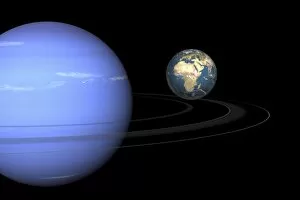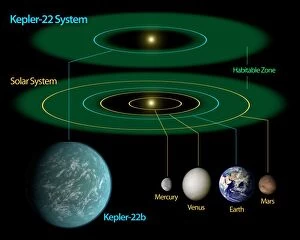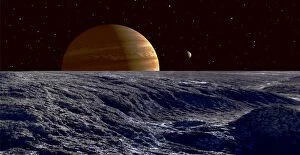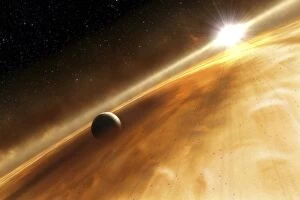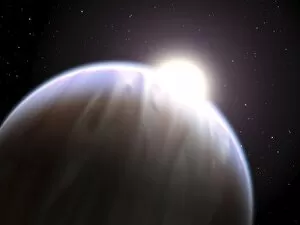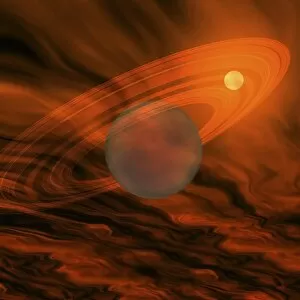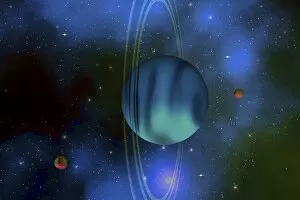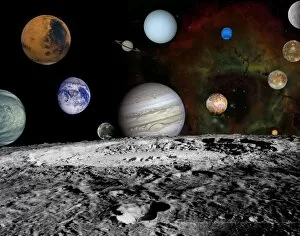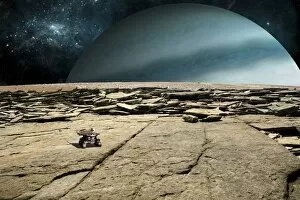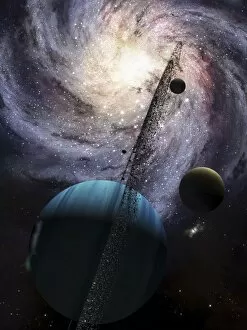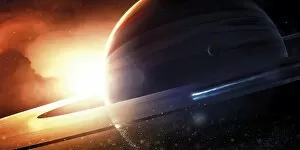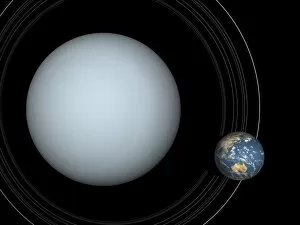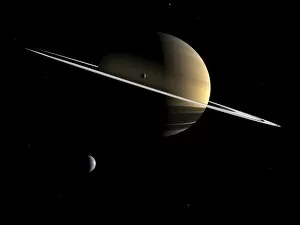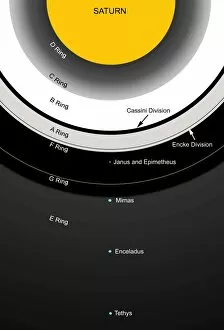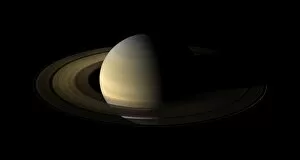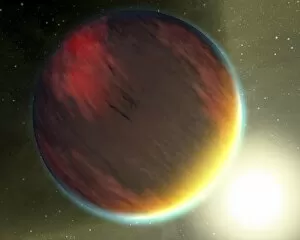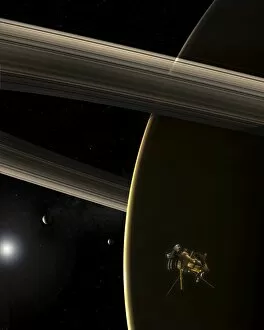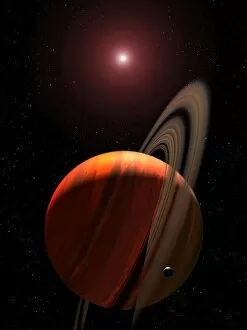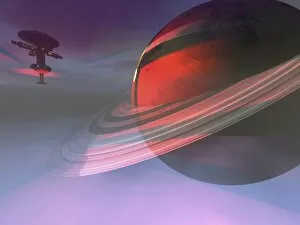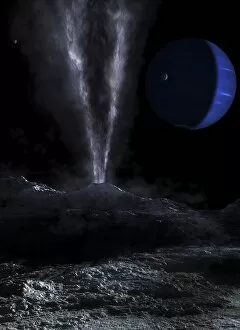Giant Planets Collection (#3)
"Exploring the Vastness: Unveiling the Secrets of Giant Planets" The Cassini spacecraft orbits Saturn and its moon Titan
For sale as Licensed Images
Choose your image, Select your licence and Download the media
"Exploring the Vastness: Unveiling the Secrets of Giant Planets" The Cassini spacecraft orbits Saturn and its moon Titan, providing us with breathtaking images and invaluable data about these colossal celestial bodies. A gigantic scarp on Uranus' moon Miranda leaves scientists awe-struck, revealing the immense forces at play in our solar system's outer reaches. Artists' concept illustrates two Saturn-sized planets discovered by Kepler, expanding our understanding of planetary diversity beyond our wildest imaginations. Behold the majestic beauty of planet Uranus, a mysterious giant that continues to captivate astronomers with its unique features and enigmatic atmosphere. Witnessing Saturn from the surface of its moon Rhea is like gazing upon a cosmic masterpiece, reminding us of the vastness and wonders of our universe. An illustration showcasing Saturn and Earth to scale highlights just how small we are in comparison to these magnificent gas giants that dominate their realms. Delve into the mesmerizing realm of Saturn as it unveils its rings, storms, and ethereal beauty – a true marvel among giant planets in our solar system. Neptune seen from its tiny distant moon Nereid offers a humbling perspective on this distant ice giant, reminding us of the sheer size and grandeur present even in remote corners of space. Discover an exoplanet resembling Jupiter orbiting Epsilon Eridani – an intriguing glimpse into potential habitable worlds beyond our own solar system's boundaries. Immerse yourself in an artist's concept depicting Epsilon Eridani as a possible habitable planet – sparking dreams about extraterrestrial life thriving amidst unknown wonders. Amongst 70 Virginis' planetary companions lies a super-Jupiter – an enormous gas giant challenging conventional notions about planetary formation within star systems near ours.



